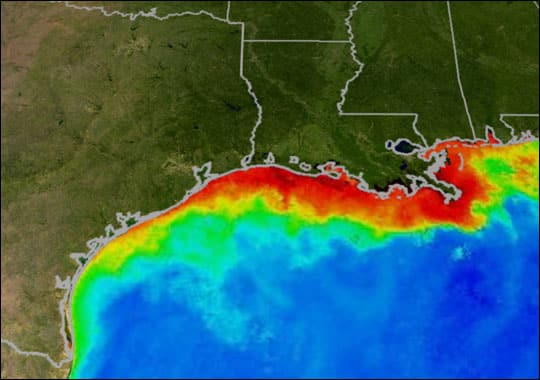
gulf dead zone
Scientists are predicting this year’s “Gulf of Mexico Dead Zone” could be the largest ever recorded. Dead zones are the result of fatally low-oxygenated waters typically occurring due to algae die-offs, which take place near coasts. Dead zones happen when nutrient-rich waters promote uncontrolled algae growth. As the algae eventually dies, it sinks to the bottom where bacteria feast on it. Unfortunately, this process consumes copious amounts of oxygen leaving resident creatures with two options: flee the area or perish from suffocation.
Top marine researchers at the University of Michigan are predicting the 2013 Gulf of Mexico Dead Zone will envelop between 7,286 and 8,561 square miles. If the devastation reaches the upper-end of the predicted range it will be the largest ever recorded—covering an area roughly the size New Jersey.
While the Dead Zone spells disaster for marine life, it also spells tragedy for commercial and sport fishing. Gulf-region commercial fishermen inject an estimated $629 million dollars into the economy as a direct result of their operations. Likewise, recreational anglers flock to the Gulf each year to experience the rich angling bounty, with their numbers exceeding 3,000,000—they bring with them upwards of $1 billion dollars in real-time revenue.
Sadly, the Dead Zone is created by essential agriculturally-based, nutrient rich (i.e., phosphorus, nitrogen and potassium) fertilizers. These elements find their way into the warm waters of the Gulf via the Mississippi River and its tributaries. Scientists point to the recent spree of heavy rains and floods in the Midwest and subsequent agricultural crop run-offs for the heavy influx of nutrients. Interestingly, the most negatively-affected species are shellfish, as they have limited mobility and are typically unable to escape the devastating affects of the Dead Zone.









